From our employees to a country worth celebrating: Happy Canada Day!
Whether it is by birth or at a ceremony or after a long struggle, it’s wonderful to be Canadian, isn’t it?
This one special day on the calendar is set aside to enjoy that, plain and simple.
On this day, from far and wide, whatever makes each one of us distinct, we celebrate together, all 36 million of us – strong and free and so fortunate to live here.
Canada Day is an event, which is open to everyone.
At Canada Post, our more than 60,000 employees are proud and grateful to serve Canada and every Canadian. Few if any other companies can say this, but all 36 million of you are our customers, in addition to being our fellow Canadians.
Today we honour this country and our special connection with Canadians in two ways.
Below, some of our employees wanted to express their thoughts about Canada in their own words on camera.
After that, scroll down to enjoy our From Far and Wide stamps. They depict and celebrate this great land – and might help you plan your next trip.
Enjoy – and from everyone at Canada Post, happy Canada Day!
From Far and Wide stamps celebrate Canada’s scenic gems
Our nine-stamp From Far and Wide series offers a traveller’s view of many must-see places on the map of Canada.
And some map it is. Canada extends from southernmost Pelee Island to the high Arctic; from rainforest firs stretching skyward on Vancouver Island to colourful clapboard homes perched on rocky shores 5,500 km away in St. John’s. That’s also the span of this beautiful stamp series.
May these stamps inspire your sense of wonder and urge to wander.
Here are the 2018 From Far and Wide stamps:
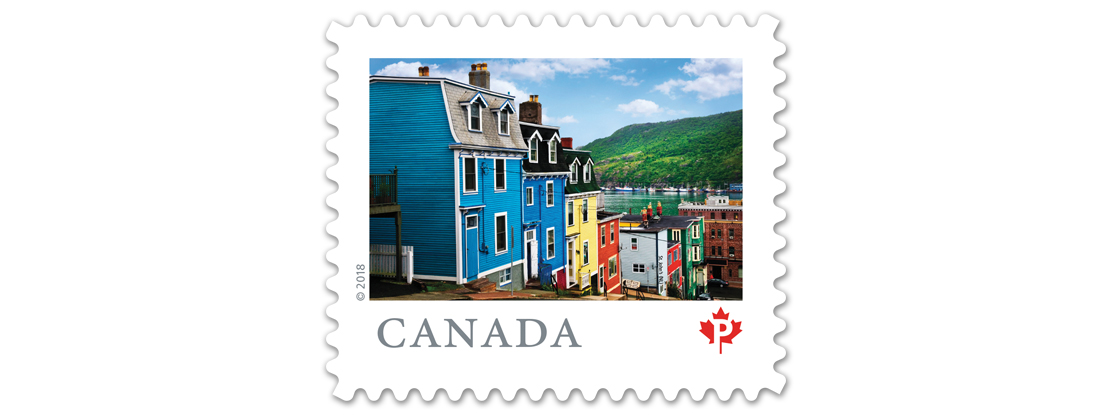
St. John’s (NL) Photo: Elena Elisseeva
The vibrant, charming row houses of Jellybean Row attract tourists and lend the city charm. Many of the houses, perched on the hill overlooking the harbour, were built after the Great Fire of 1892. Urban legend has it that fishermen painted their homes to match their boats so they could find their way home in the fog. In fact, Jellybean Row was part of a 1970s urban revitalization.
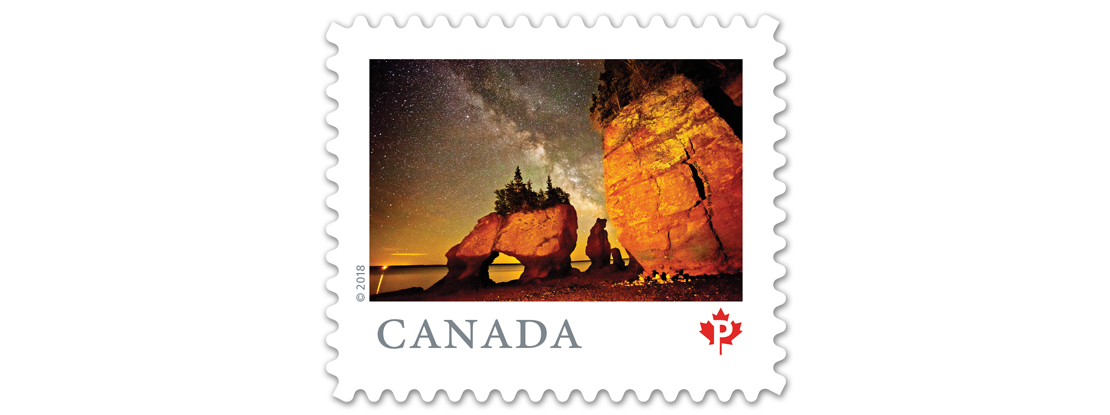
Rocher Hopewell Rocks (NB) Photo: Kevin Snair |Creative Imagery
The flowerpot-like structures of Hopewell Rocks in the Bay of Fundy were carved by tides (which are among the world’s highest) and winds over millions of years. At low tide, visitors walk on the ocean floor among the giant rocks.
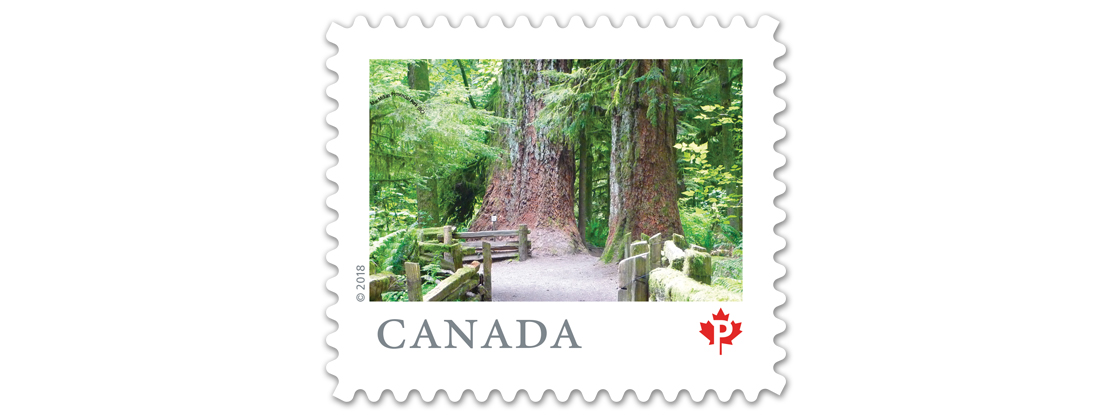
MacMillan Provincial Park (BC) Photo: BritishColumbia.com, courtesy of BC Parks
This park on Vancouver Island preserves an old-growth forest of Douglas fir and includes Cathedral Grove (pictured), where visitors can walk through a network of trails beneath towering trees, some more than 800 years old.
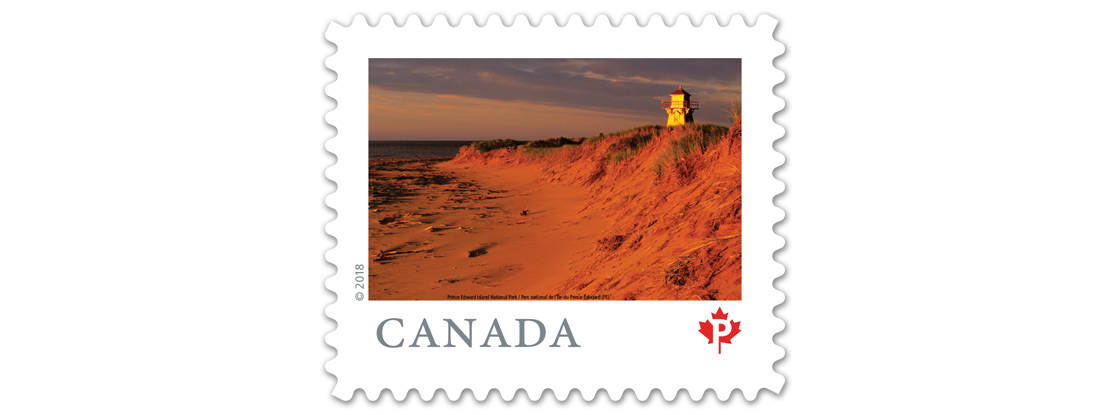
Prince Edward Island National Park (PE) Photo: Barrett & MacKay Photography | All Canada Photos
A ribbon of sand dunes and red sandstone cliffs stretching more than 65 kilometres of the island’s north shore, the park has extensive boardwalks and hiking and biking trails. It is also home to the 19th-century farmhouse depicted in Lucy Maud Montgomery’s 1908 novel Anne of Green Gables. The stamp features the lighthouse at Covehead Harbour.
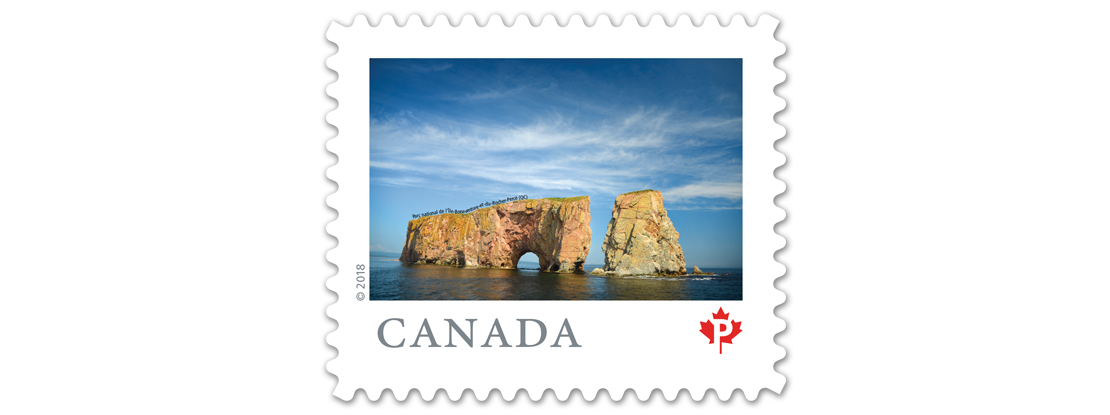
Parc national de l’Île-Bonaventure-et-du-Rocher-Percé (QC) Photo: chictype | Getty Images, courtesy of Sépaq
Located at the tip of the Gaspé Peninsula, Parc national de l’Île-Bonaventure-et-du-Rocher-Percé has a rich natural, historic and cultural heritage. The famous Percé Rock shows how time and a powerful ocean can carve the land, while the old homes on Bonaventure Island give visitors a glimpse into life in the Gaspésie a century ago.
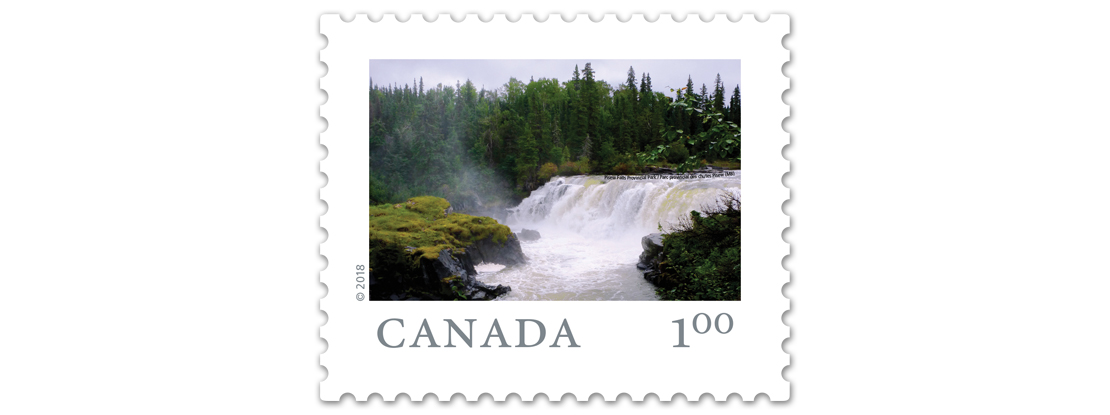
Pisew Falls Provincial Park (MB) Photo: Courtesy of Manitoba Parks
Seven hundred kilometres north of Winnipeg, Pisew Falls Provincial Park is a remote wilderness. Dropping 13 metres, Pisew Falls is the second-highest waterfall in Manitoba. An 11-kilometre trail leads hikers down the Grass River to Kwasitchewan Falls, the province’s highest waterfall. Pisew Falls got its name from the Cree word for “lynx;” the hissing waters are thought to sound like the northern wild cat.
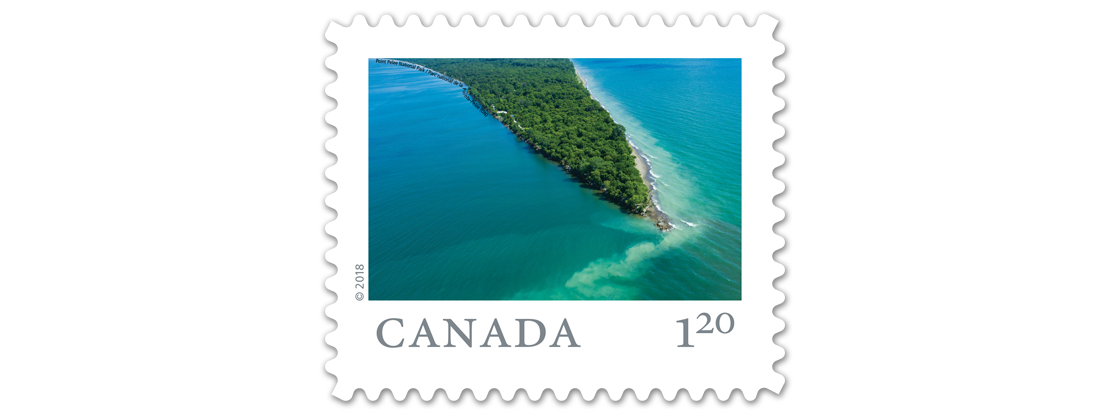
Point Pelee National Park (ON) Photo: All Canada Photos, courtesy of Parks Canada
Nearly as far south as Canada gets, this national park in Lake Erie is one of Canada’s most ecologically diverse. Its southern Carolinian forest and marshlands are home to many species of birds, turtles and dragonflies. A renowned location for observing songbirds migrating north and monarch butterflies heading south, Point Pelee National Park is celebrating its 100th anniversary in 2018.
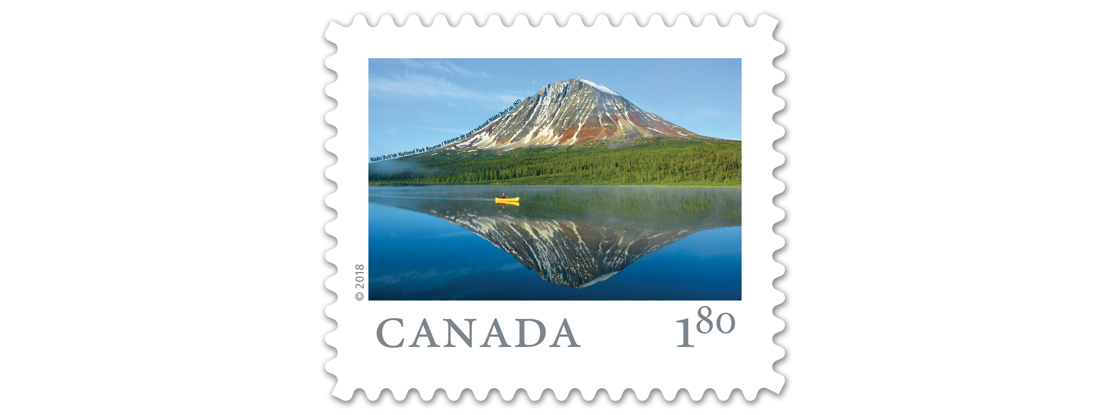
Nááts’įhch’oh National Park Reserve (NT) Photo: Laani Uunila, courtesy of Parks Canada
One of Canada’s newest national parks, Nááts’įhch’oh National Park Reserve is named after Nááts’ihch’oh the mountain, which is historically a powerful place for the people of the Sahtu. The park is in the traditional lands of the Shúhtaot’ine (Mountain Dene) close to the Yukon border. Adventure-seekers who come to hike or paddle are sure to see grizzly bears, Dall’s sheep, mountain goats and woodland caribou.
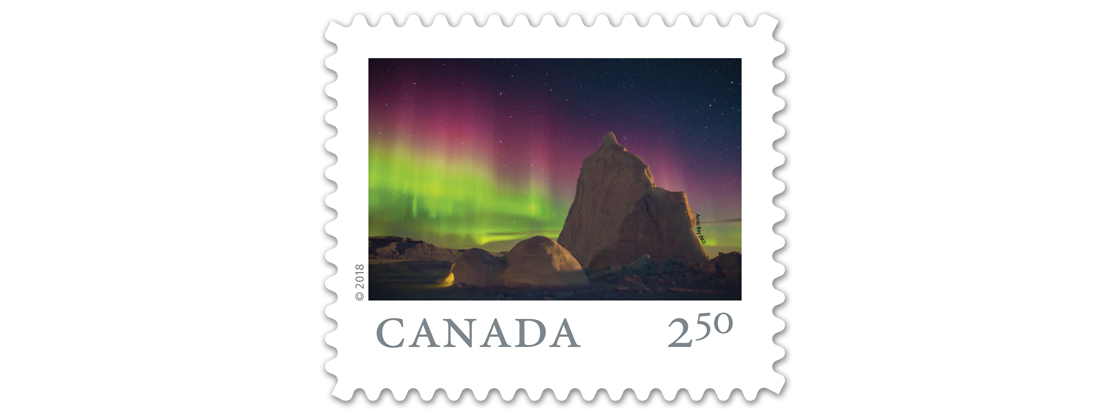
Arctic Bay (NU) Photo: Clare Kines
Arctic Bay is a vibrant traditional community of more than 850 people in the northwest corner of Baffin Island. The harbour hamlet on a gravel beach in Adams Sound was inhabited by nomadic Arctic peoples for 5,000 years. It is home to many species of High Arctic birds, while narwhals and bowhead whales swim in its nearby waters. Its Inuktitut name, Ikpiarjuk (ᐃᒃᐱᐊᕐᔪᒃ), or “the pocket,” refers to it being bordered by hills on three sides. A popular dog sledding race is held each spring between Arctic Bay and Igloolik.